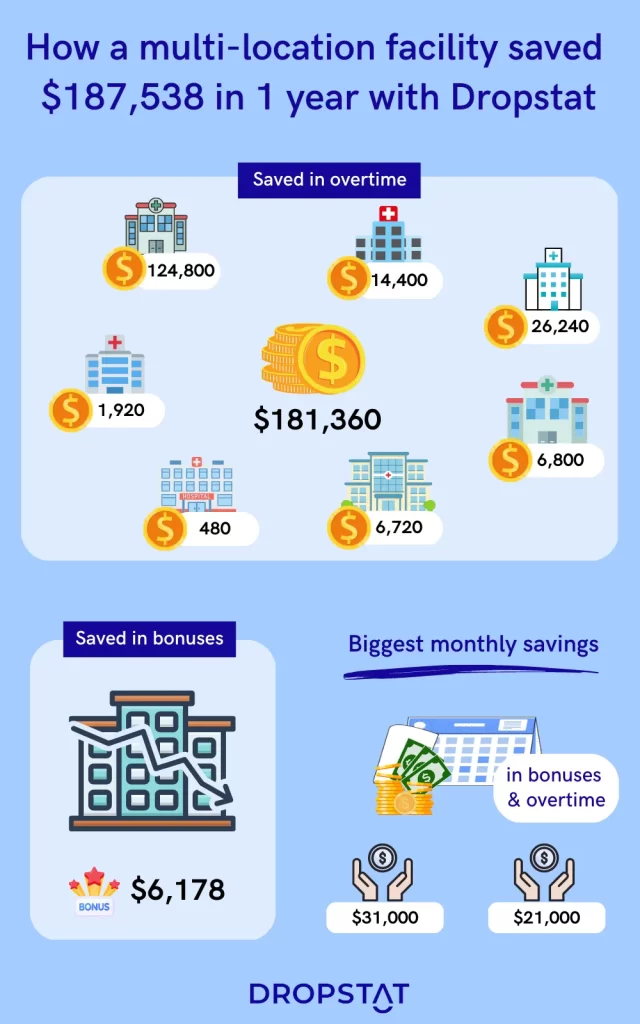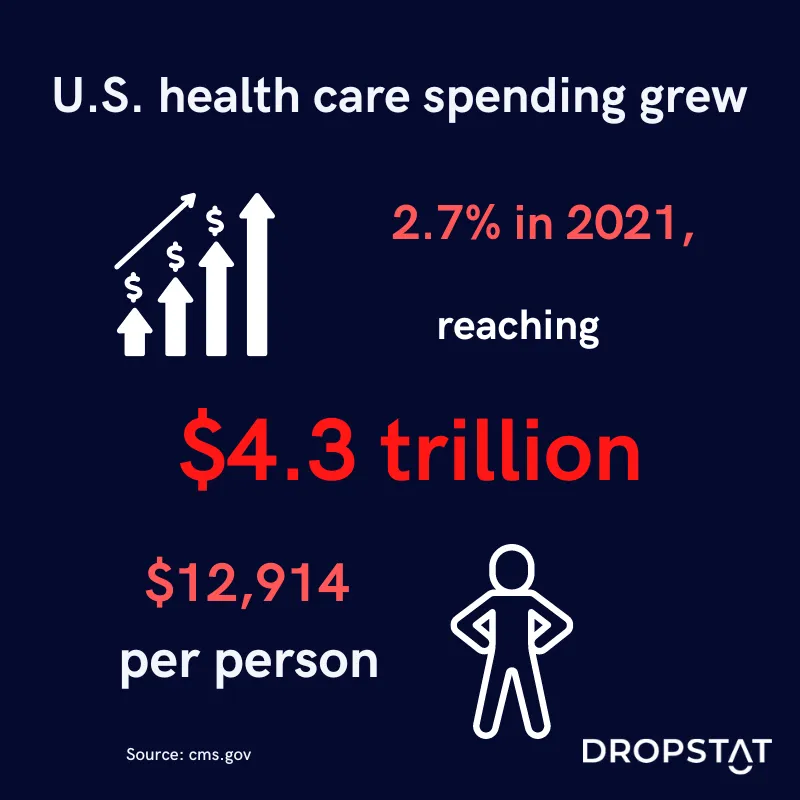However, reducing health care costs requires more than applying new operational practices. In order to decrease rising healthcare spending, healthcare executives must be able to take into consideration the severity of their facility’s challenges. For example, one healthcare facility was spending over $19,000 in avoidable overtime shifts within only 30 days, while another location allocated over $13,000 a month to bonuses.
Significantly reduced healthcare costs with Dropstat
Administrative costs can be significantly reduced with the right strategic planning. Cost tagging, overtime tagging, early shift postings, and predictive analytics algorithms through Dropstat have enabled one facility to save $187,538 in a single year!
By utilizing Dropstat’s proactive approaches to safe staffing, one location was able to reduce healthcare costs by $31,000 on bonuses and overtime within only one month.
To break down the cost reduction, avoiding overtime shifts accounted for over $181,360 of these savings. Not only do these savings assist with decreasing egregious operating expenses, but it also improves patient outcomes, health care services, staff, and patient experience.

Dropstat’s features that helped to reduce costs and improve the quality of healthcare
Some of the practices that have enabled this facility to reduce operating costs related to staffing include:
- cost tagging
- overtime tagging
- predictive analytics and AI
Cost-tagging
Dropstat has integrated cost-tagging capabilities into its platform. This enables schedulers to determine which employee would be the most efficient to fill a specific shift by comparing their rate to that of other employees within the same discipline.
Overtime-tagging
Similar to cost-tagging, the overtime-tagging function allows facilities to determine which employees would be working overtime if they were used to fill additional shifts. Ultimately, this insight helps reduce costs associated with nurse overtime by filling shifts with other qualified staff. This also helps prevent nurse burnout and reduced quality patient care, amongst many other negative effects associated with nurses working overtime.

Predictive analytics
Another key aspect that empowered this facility to lower costs is Dropstat’s predictive analytics and AI utilization. These integrated and comprehensive capabilities provide facilities with a greater awareness of the staffing patterns and challenges that cause inefficient practices. Knowing which shifts experience frequent callouts or understaffing gives administrators and schedulers the ability to request more nurses in advance to compensate for the potential shortage.
Ideas that can help to reduce healthcare costs in your facility
- Use previous staffing data to determine where there is a recurring demand for more staff.
- Establish practices to discourage unrestrained bonuses and overtime usage.
- Prioritize nurse retention strategies that aim to reduce burnout and turnover.
- Work with your staff to encourage flexibility and find the right schedule for their needs.
How Dropstat can reduce the per capita cost of healthcare staffing
Healthcare spending, specifically on staffing, has become a major concern for healthcare facilities that are attempting to navigate the nursing shortage. Fortunately, Dropstat has the necessary features to combat these challenges. Last-minute staffing often causes stressful and inefficient methods of filling shifts, such as manually calling or texting individual employees.
However, Dropstat’s key features, including increasing shift lead time, combat these recurring challenges. When your facility prioritizes posting shifts at least 30 days in advance, your staff has a greater ability to fill those shifts successfully. Your schedulers can avoid last-minute attempts to find available nurses to meet safety ratios. Getting a head start on filling shifts ultimately enhances your facility’s ability to select the most cost-effective staff with the necessary skills to meet patient expectations.
Schedule a demo now to start your journey to reducing healthcare costs in your facility with Dropstat’s specialized features.







